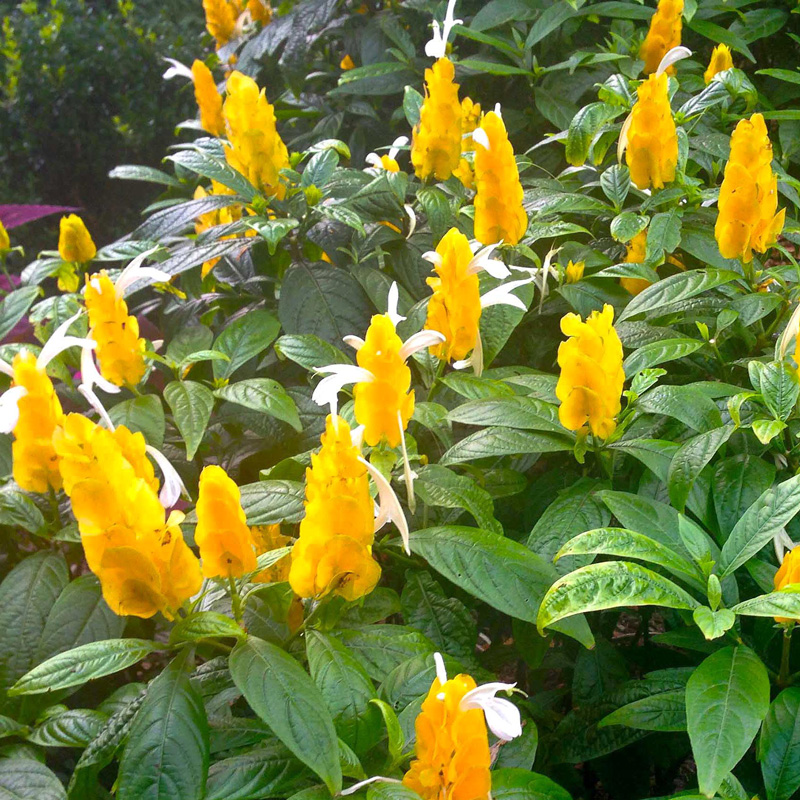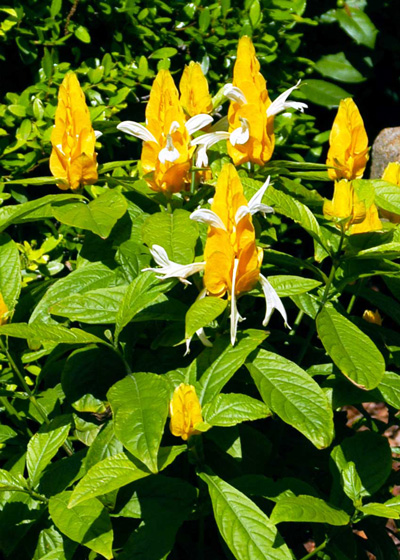Savor That Flavor

I remember Joe Crump (Crump’s Garden Center, McKinney, now closed) handing me a lemon lollipop and saying, “Try this. We can’t grow them fast enough.” And as I shopped the nursery that morning, I could see what he was saying was true.
Now, here we are decades later, and the plant is still featured on many Texas doorsteps, pool sides and patios. It wouldn’t be summer without it.

Here’s what you’ll want to know…
- Common names: Lemon lollipop, golden shrimp plant. (I never heard that second one, but somebody wrote it.)
- Botanic name: Pachystachys lutea.
- Name is from Greek “pachys” for “thick” and “stachys” for “ear of corn.”
- Native home: Peru.
- Adaptations in Texas landscapes: Tropical annual (winter-hardy only in Gulf Coast and South Texas, Zones 10 and 11).
- Best in part shade (protection from afternoon sun).
- Best landscape uses: Large patio pots in center of mixed plantings or in beds in front of, or alongside coleus or crotons of contrasting colors.
- Hummingbird-friendly.
- Blooms non-stop all summer and fall.
- Responds well to water-soluble, high-nitrogen fertilizers applied in diluted solutions every week or two. Leaves will always appear lighter green, however. That’s not a shortage of nutrients.
- No serious insect or disease problems.
- Propagated from stem cuttings.
Posted by Neil Sperry
